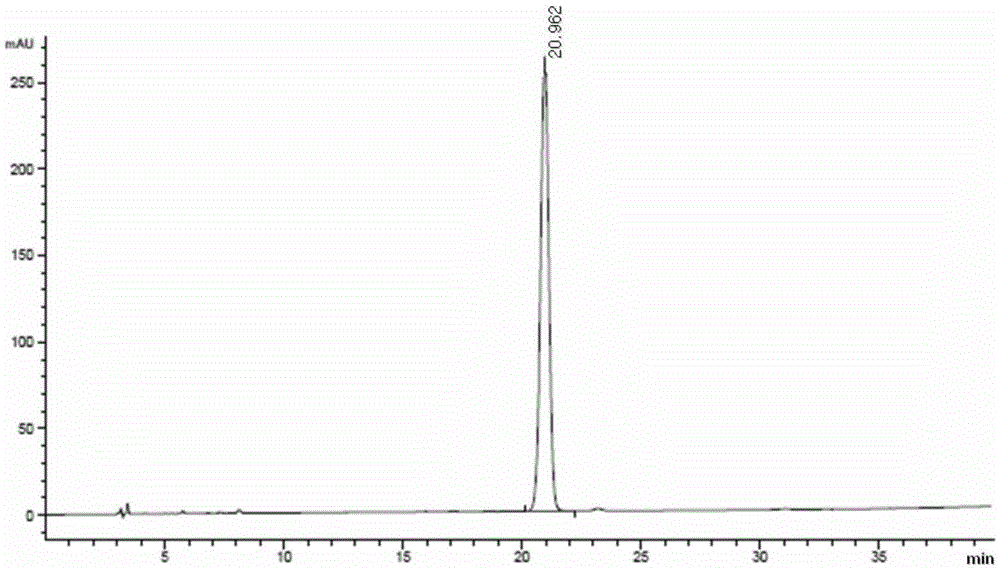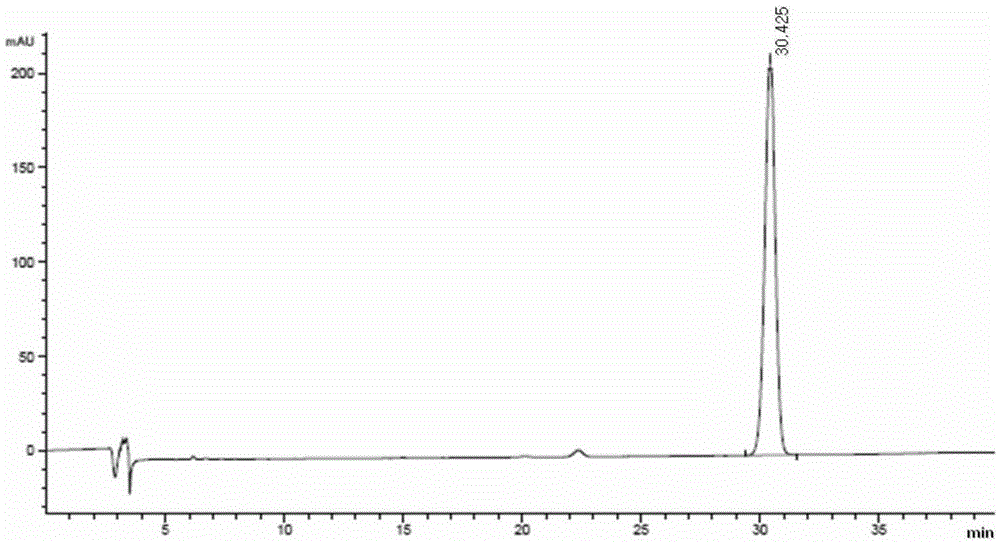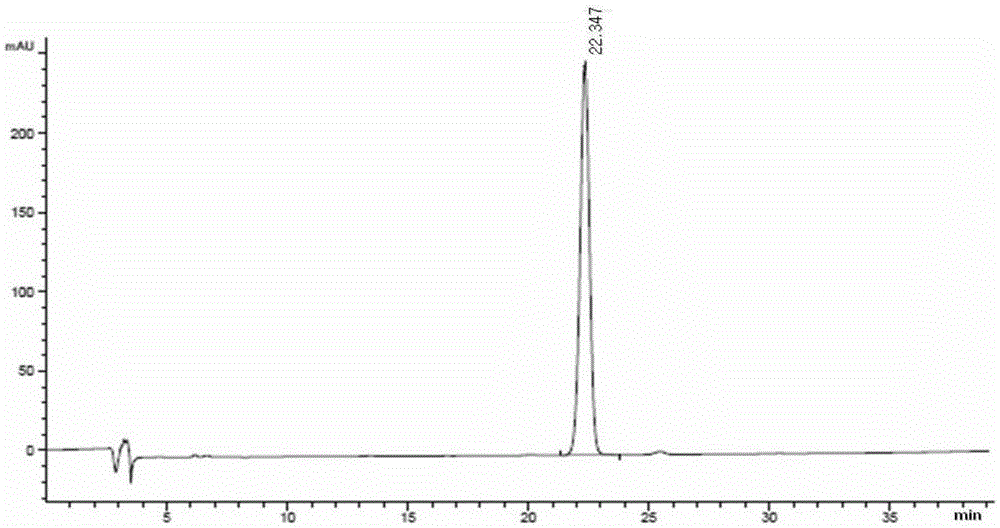Method used for detecting cinacalcet hydrochloride isomerides via HPLC method
A technology of cinacalcet hydrochloride and isomers, which is applied in the field of medicine, can solve the problems affecting the detection of cinacalcet hydrochloride content and no analytical method, and achieve the effect of improving product quality and safety and optimizing process
- Summary
- Abstract
- Description
- Claims
- Application Information
AI Technical Summary
Problems solved by technology
Method used
Image
Examples
Embodiment 1
[0033] (1) Experimental materials and experimental conditions:
[0034] Chromatographic column: Phenomenex Lux 5u Cellulose-3 column (250mm×4.6mm, 5um), mobile phase: acetonitrile and 0.01mol / L anhydrous sodium dihydrogen phosphate aqueous solution, flow rate: 1ml / min, column temperature: 30°C, detection Wavelength: 222nm, injection volume: 10 μL; use mobile phase for gradient elution, and its gradient elution volume is shown in Table 2.
[0035] (2) Experimental steps:
[0036] Take isomer A, dissolve and dilute it with methanol, and make test solution A containing about 5.0 mg of isomer A per 1 ml of solution;
[0037] Extract 10 μL of test solution A, inject it into the chromatograph, record the chromatogram, see figure 1 .
[0038] (3) Analysis of experimental results
[0039] figure 1 Among them, cinacalcet isomer A has a chromatographic peak with a retention time of about 20.9 min.
Embodiment 2
[0041] (1) Experimental materials and experimental conditions:
[0042] Chromatographic column: Phenomenex Lux 5u Cellulose-3 column (250mm×4.6mm, 5um), mobile phase: acetonitrile and 0.01mol / L anhydrous sodium dihydrogen phosphate aqueous solution, flow rate: 1ml / min, column temperature: 30°C, detection Wavelength: 222nm, injection volume: 10 μL; use mobile phase for gradient elution, and its gradient elution volume is shown in Table 2.
[0043] (2) Experimental steps:
[0044] Take isomer B, dissolve and dilute it with methanol, and prepare test solution B containing about 5.0 mg of isomer B in 1 ml of solution;
[0045] Extract 10 μL of the test solution B, inject it into the chromatograph, record the chromatogram, see figure 2 .
[0046] (3) Analysis of experimental results
[0047] figure 2 Among them, cinacalcet isomer B has a chromatographic peak with a retention time of about 30.4 min.
Embodiment 3
[0049] (1) Experimental materials and experimental conditions:
[0050] Chromatographic column: Phenomenex Lux 5u Cellulose-3 column (250mm×4.6mm, 5um), mobile phase: acetonitrile and 0.01mol / L anhydrous sodium dihydrogen phosphate aqueous solution, flow rate: 1ml / min, column temperature: 30°C, detection Wavelength: 222nm, injection volume: 10 μL; use mobile phase for gradient elution, and its gradient elution volume is shown in Table 2.
[0051] (2) Experimental steps:
[0052] Take cinacalcet hydrochloride (excluding isomers), dissolve and dilute it with methanol, and prepare a test solution C containing about 5.0 mg of cinacalcet hydrochloride in every 1 ml of solution;
[0053] Extract 10 μL of the test solution C, inject it into the chromatograph, record the chromatogram, see image 3 .
[0054] (3) Analysis of experimental results
[0055] image 3 Among them, cinacalcet hydrochloride has a chromatographic peak with a retention time of about 22.3 minutes.
PUM
 Login to View More
Login to View More Abstract
Description
Claims
Application Information
 Login to View More
Login to View More - R&D
- Intellectual Property
- Life Sciences
- Materials
- Tech Scout
- Unparalleled Data Quality
- Higher Quality Content
- 60% Fewer Hallucinations
Browse by: Latest US Patents, China's latest patents, Technical Efficacy Thesaurus, Application Domain, Technology Topic, Popular Technical Reports.
© 2025 PatSnap. All rights reserved.Legal|Privacy policy|Modern Slavery Act Transparency Statement|Sitemap|About US| Contact US: help@patsnap.com



